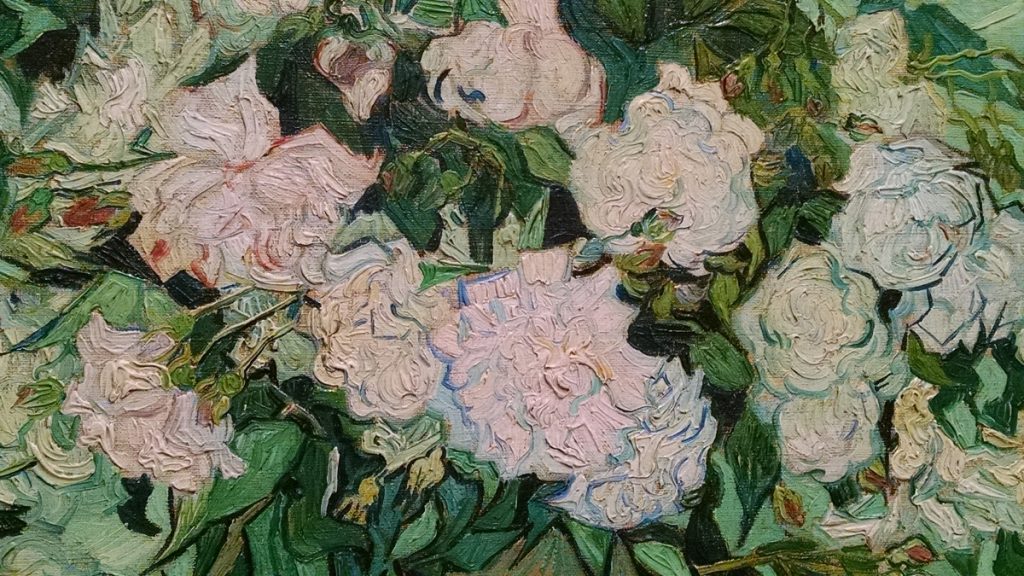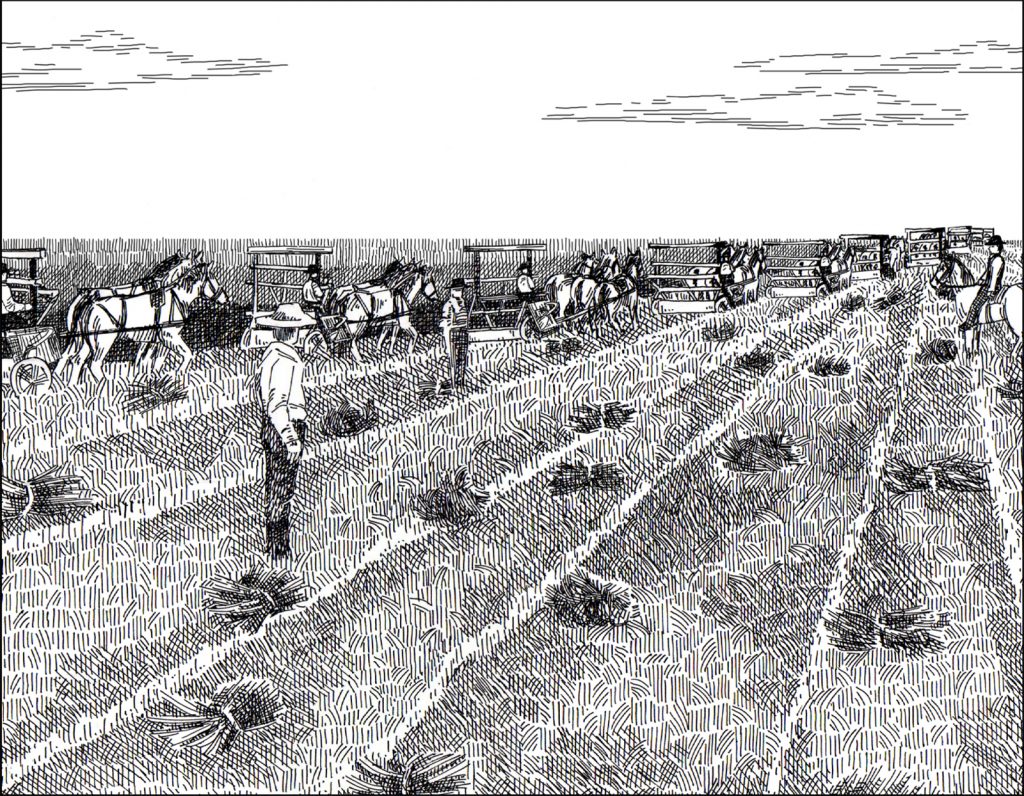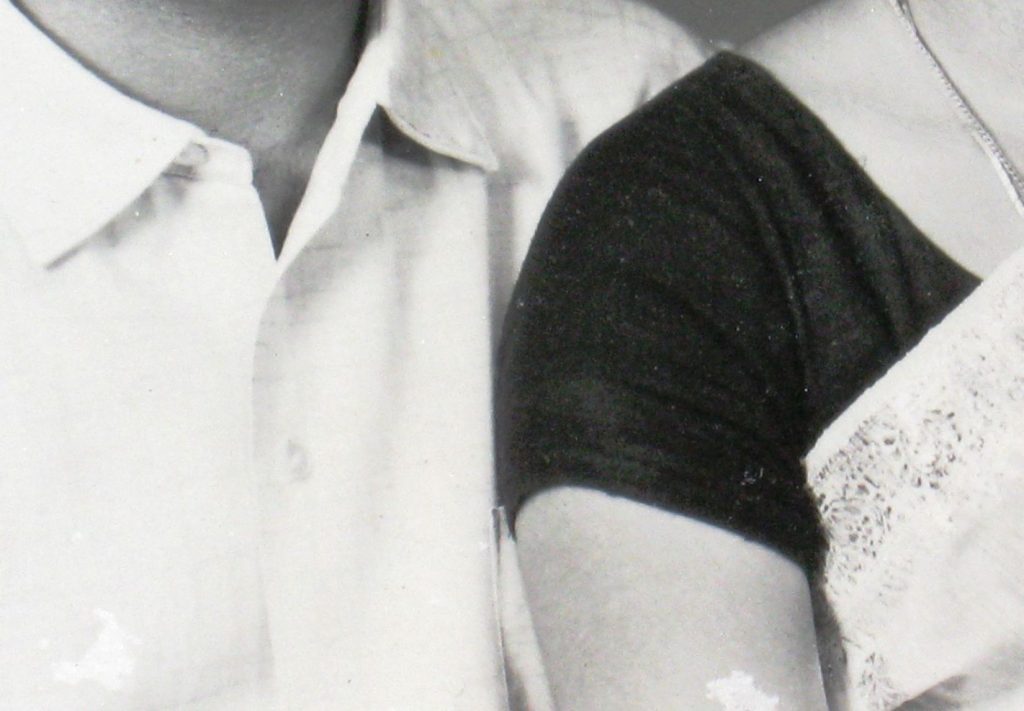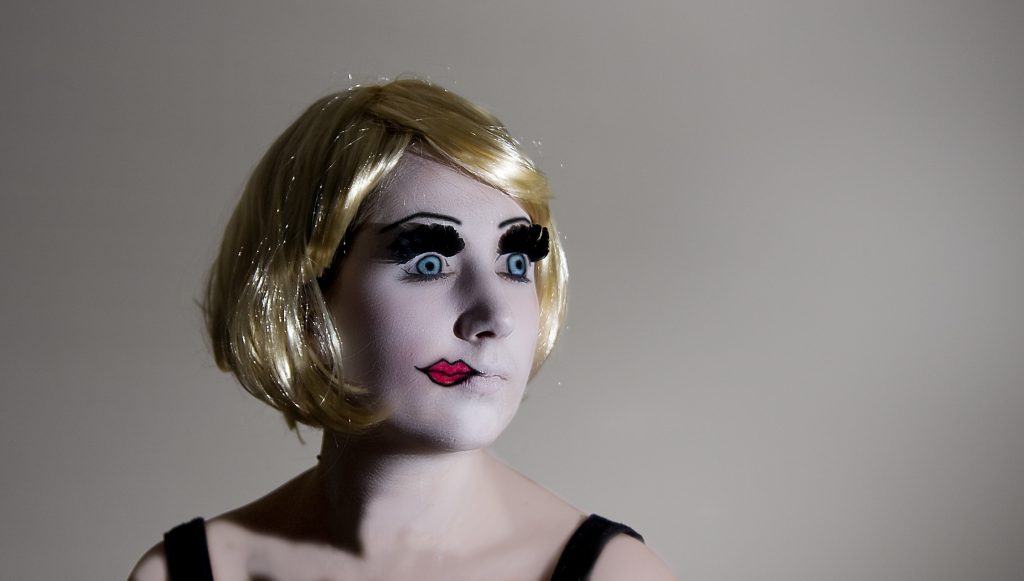Fiction from Monica McFawn excerpted from our Summer 2016 issue.
The plan was to torch the rose patch. We could, at this point, see no other way. Flickerdot, our beloved hybrid, was a complete bust. But one couldn’t blame us for being fooled: the first and second generations were so thick with blooms that Jamie could put a book — an Oxford dictionary, no less — on the plant and the dense flowers would hold it up. Flickerdot, in that early incarnation, was spectacular in all regards. The red in the center of each bloom was so saturated it seemed almost blue, the way a deep black can sometimes read as blue. The edges of the petals were almost free form, as if a rushed hand had scribbled the barest suggestion of a flower. That was, Jamie felt, the draw. That Flickerdot seemed sort of gestural and sloppy — a kind of crudely stylized version of the rose. The whole plant, viewed from the side, looked just like a flower a child would draw — a bright green stalk and a U-shape, topped with a pinking-shear jagged line.
We named it “dot,” because a dot was an even more fundamental flower shape, the single point of red in a broad landscape meant to indicate a flower. We went with “flicker,” since the sun, as it raked through the rose patch, would go blinky and scattered. Flickerdot, we called it, and I still remember signing the paperwork to register it with the International Cultivar Registration Authority (ICRA). My pen had bled a bit on the first one I signed, so I went to the trouble of asking for a new certificate. I wanted it to look perfect.
Flickerdot’s lineage was impeccable. One half was a nineteenth century Irish garden varietal, long thought to be extinct. The other was a clumpy wine-dark wild rose from Auckland. The feeling was that the Aukland, which grew boldly perpendicular on vertical rock faces, would appealingly roughen the prim decorum of the garden rose. Flickerdot would be like an elegant woman waking up in your bed, her hair all a-tangle, her poise disrupted by passion, the animal peeking through a symmetrical, impassive face.
We’d befriended a rich and eccentric Irishman to get access to Flickerdot’s seed parent. For months Jamie wrote him thick letters, long admiring things, full of false compliments and feigned interests in the Irishman’s hobby, which was the repair and collection of old telegraphs. Smeary letters would arrive from Ireland grovelling for insight into the American telegraphic system circa 1890. Jamie made me pretend I was a telegraph expert on the phone. I spoke expansively about the semaphoric telegraph, a post with rotating arms that communicated to a lookout miles away by means of its contortions.
He sent the seeds then, out of gratitude. Then Jamie ceased contact. Sometimes, when Jamie was busy in the garden the phone rang and it was the Irishman. I liked his voice so much that I whispered invented indicator codes to him. I usually read them off the fertilizer bags: 20-30-20.
The Auckland was my doing. I bought the special shoes, the carbineers, the lines, and all that. I hung off the rockface with the roses in one hand, the rest of my body pressed into dozens of nooks, my fingernails wedged between layers of shale. I had to use such pressure to hold myself up, I remember. Jamie and the local guide looked up at me as they smoked, shouting encouragements. One handed, I slipped the specimen into a silk pouch, teasing the rootball so it would be more flexible as I rappelled down.
…
To continue reading “Flickerdot,” purchase MQR 55:3 (Summer 2016) for $7, or consider taking out a one-year subscription for just $25.
Image: Detail of Vincent Van Gogh’s “Still Life: Vase with Pink Roses.”




